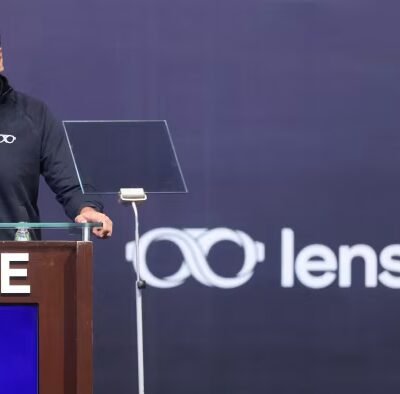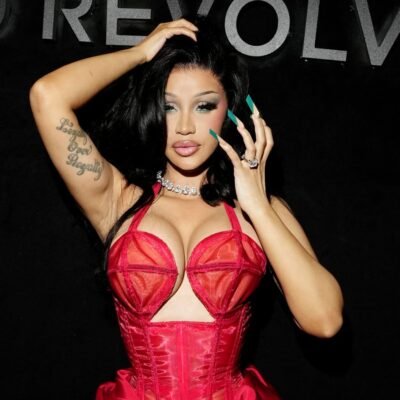INDIANAPOLIS, INDIANA – JULY 19: Kiki Iriafen #44 of the Washington Mystics, Gabby Williams #5 of … More
Caitlin Clark’s rookie trading card sold for $366,000 four months ago. That figure represents over $150,000 more than the maximum WNBA single-season salary and $28,000 more than Clark will earn across her entire four-year rookie contract. This disparity reveals a fundamental disconnect between market demand and player compensation that undermines the league’s growth potential.
Trading card valuations can offer a unique market assessment of fan interest and player marketability, untainted by the structural constraints that artificially suppress WNBA salaries. Yet whenever salary negotiations surface in public discourse, social media erupts with predictable refrains about players not deserving more money because “the revenue isn’t there.” This oversimplified argument not only ignores decades of systematic underinvestment but fails to recognize the league’s current growth trajectory and future potential.
As collective bargaining negotiations intensify and players articulate their demands for equitable sharing, it becomes essential to examine the flawed economic logic that has constrained women’s professional basketball. Clarks’s record trading card price demonstrates market demand not just for individual stars, but for the high-quality basketball that emerges when more players can focus exclusively on their craft over the course of a single season rather than seeking overseas supplements to inadequate salaries. For that reason, the players’ positions reflect strategic thinking about capturing value from continued anticipated growth while recognizing that individual marketability depends on collective play and competitiveness among all players and teams.
ARLINGTON, TEXAS – SEPTEMBER 01: A detailed view of a trading card is shown as Caitlin Clark #22 of … More
WNBA Growth Outpaces Historical NBA Benchmarks
According to Dr. David Berri, professor of economics at Southern Utah University, “the WNBA has $200 million in revenue today. Adjusted for inflation, per team revenue in the WNBA today appears to exceed where the NBA was at back in the early 1970s when the NBA was the same age as the WNBA is today. The WNBA appears to be on the same path as the NBA.” Berri has also noted, “WNBA players get less than 7% of (league) revenue. The top salary in the WNBA right now is less than $250,000. The NBA 50 years ago was paying its top players $400,000 a year, and that was (at a time) when the NBA only had $30 million in revenue 50 years ago. The WNBA is at $300 million in revenue, at least, and we also know that with the new television deal, it’ll be at least $500 million.”
This comparison refutes the common myth that the WNBA operates in some fundamentally different economic reality from the NBA. Yet the treatment of players couldn’t be more different and at no time in NBA history, including throughout the 1950s when the NBA was a very small operation with very few fans (roughly a fifth of the size and scope of the WNBA in 2025) were NBA players being treated as poorly as current WNBA players.
INDIANAPOLIS, INDIANA – JULY 19: A’ja Wilson #22 of the Las Vegas Aces and Jackie Young #0 of the … More
The Profitability Timeline
WNBA players are positioning themselves for the future of the league. These players are negotiating their fair portion of the profits that growth trends suggest are becoming more realistic, not asking for a larger share of losses. The revenue sharing structure established now will determine whether players benefit from the success their talent and marketability are driving into the future. As union president Nneka Ogwumike articulated during recent negotiations, “We see the growth in the league and as it stands, the current salary system is not really paying us what we’re owed. We want to be able to have that fair share moving forward, especially as we see all of the investment going in.” The key phrase from Ogwumike is “moving forward.” Current negotiations are not simply about adjusting salaries to match existing revenue, but about creating structures that allow players to benefit from the growth trajectory for the league.
Further, the “revenue isn’t there” argument collapses under scrutiny because it conflates current constrained revenue with market potential. Every metric suggests the WNBA operates well below its revenue ceiling due to strategic choices rather than market limitations. Engelbert acknowledged this reality, “we want to significantly increase their salary and benefits while balancing with our owners, their ability to have a path to profitability, as well as continued investment.” The path to profitability runs directly through maximizing the product’s appeal, which requires treating players as valuable assets rather than cost centers.
As Liberty guard Natasha Cloud noted, “We’re fighting for what we’re due, what we’re worth, our value. They’re going to be fighting for what they think protects the business. Our job is to find the common ground.” That common ground exists in recognizing that player compensation and league growth aren’t competing interests. These components of the business of women’s sport are complementary strategies to be used to capture the massive market opportunity that current trends have revealed. The question isn’t whether the WNBA can afford to pay players what they’re worth; it’s whether the league can afford not to make the investments necessary to realize its full potential.
INDIANAPOLIS, INDIANA – JULY 19: A fan holds a sign saying “Pay the players” during the 2025 AT&T … More
Strategic Expansion as a Revenue Driver
Schedule Expansion: While the NBA generates revenue across 82 regular season games from October through June (a span of nearly nine months) the WNBA season encompasses only 44 games compressed into five months from May to September. This means the WNBA has 46% fewer games to sell tickets, concessions, and merchandise, while also offering broadcasters less than half the inventory of live content. Expanding the WNBA season to even 60 games would increase revenue opportunities by 36%, without accounting for the multiplier effect of sustained fan engagement across a longer season.
Yet the current CBA caps the season at 44 games, creating an artificial ceiling on revenue generation that has nothing to do with market demand and everything to do with ownership’s investment priorities. Commissioner Cathy Engelbert has indicated flexibility for seasons extending into November, particularly with the 2026 FIBA World Cup creating scheduling considerations. A longer season means more games, more broadcast inventory, and more opportunities for the viewership growth the league is already experiencing.
Strategic Time Slot Optimization: When games receive proper placement and promotion, the numbers speak volumes about untapped demand. Weekend afternoon games between 1:00 and 3:00 p.m. ET consistently deliver exceptional ratings, with four of the five highest-rated games airing at 3:00 p.m. on Saturdays and averaging 2.16 million viewers. Yet this proven time slot represents less than 25 percent of the national schedule. Meanwhile, only 25 percent of WNBA games currently air during traditional primetime windows, and many of those are relegated to cable networks with limited reach. The May 17 Chicago Sky at Indiana Fever game drew 2.7 million viewers on ABC at 3:00 p.m., which made it the most-watched regular season game since 2000. Shifting just half of the games to these proven time slots could increase average viewership from around one million to between 1.5 and 2 million per game.
Expansion Economics: The league has already approved franchises for Cleveland, Detroit, and Philadelphia at the record $250 million expansion fee. Each new market brings additional revenue streams through ticket sales, local sponsorships, and regional media rights. The expansion trajectory suggests demand far exceeds current supply, creating artificial scarcity that limits overall league revenue potential.
INDIANAPOLIS, INDIANA – JULY 19: Caitlin Clark #22 of the Indiana Fever and Sabrina Ionescu #20 of … More
“Pay Us What You Own Us”
When a trading card commands more market value than the athletes themselves can earn, the system isn’t simply unfair, it’s also inefficient. The WNBA’s current revenue-sharing model represents a fundamental misallocation of resources that constrains the very growth it claims to seek. Players receiving less than 10% of league revenue while generating record viewership, sold-out arenas, and $250 million expansion fees defies basic economic principles that govern every other major sports league. The “Pay Us What You Owe Us” movement isn’t about charity or special treatment. It’s about applying standard sports economics to a league that has operated under artificial constraints for too long. When players can focus exclusively on their craft without being forced to compete overseas for additional income, when games air in optimal time slots, and when the season expands to meet demand, it’s more than likely that the revenue ceiling will experience a significant rise. When a piece of cardboard sells for more than the maximum salary, it reveals the WNBA’s fundamental failure to invest in the very players whose talent and marketability have generated and will continue to generate historic growth and fan demand.





